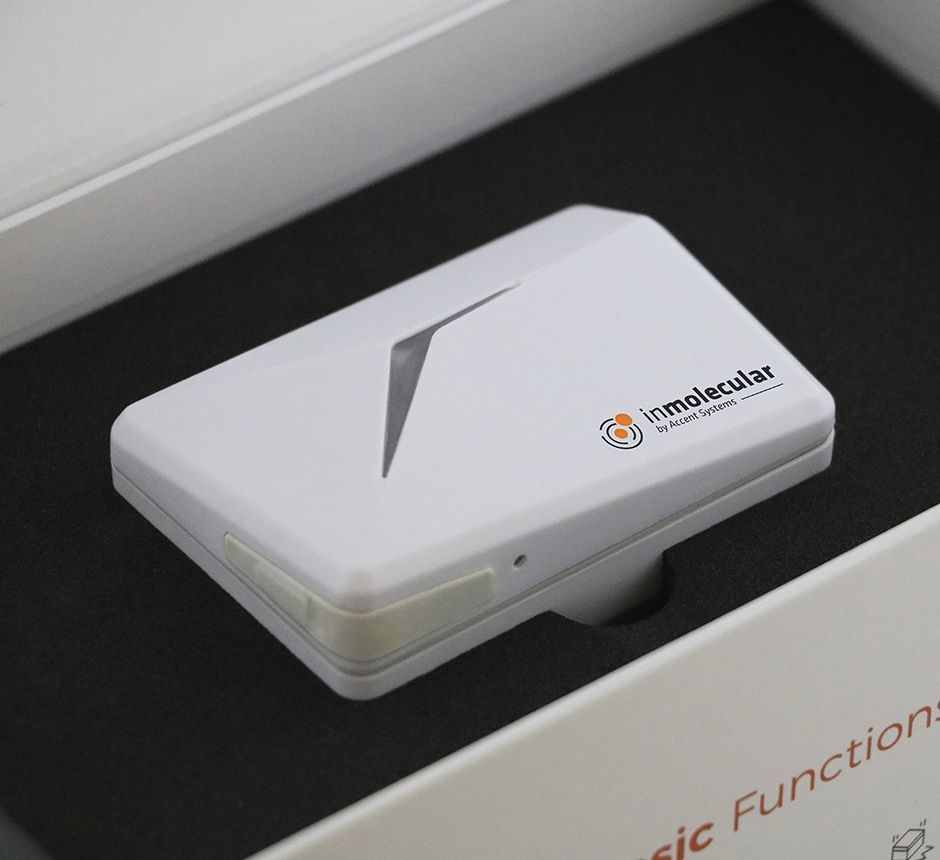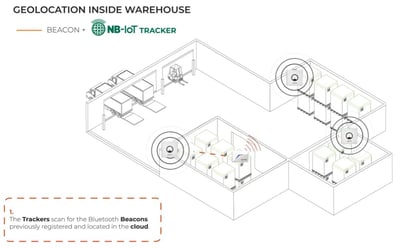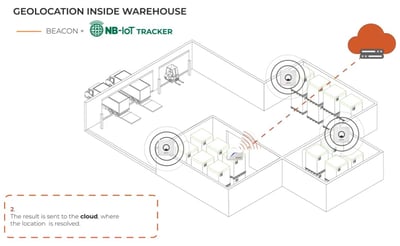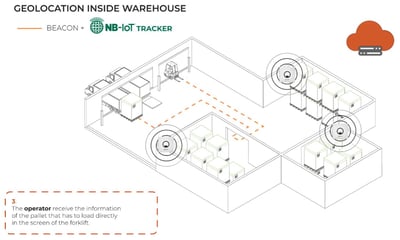NB-IoT Across Different Verticals
NB-IoT (Narrowband IoT) is often implemented in systems where the devices have limited mobility or are stationary. The narrowband in NB-IoT ensures that the process of transmitting and receiving data can be done only with a single frequency band, over a narrow bandwidth for low transmission power rate.

The IoT technology aims to connect more things to enhance communication and transmission of data everywhere. Sometimes, these things are secluded within walls and floors. NB-IoT’s narrowband feature allows communication between the things indoors and even underground since they have much better penetration capabilities than the other LPWAN.
NB-IoT optimizes its low power capabilities to surpass its competitors, leading to having one of the most efficient cellular network technologies. In comparison to the other LPWAN technologies, NB-IoT also has a higher data transfer rate, reaching up to 200 kbit/sec (LoRaWAN's transfer rate is only 50 kbit/sec).
These features push the growth of NB-IoT applications across different industries. A few of the verticals are mentioned below:
Smart Metering
An example of this is an indoor monitoring system. An NB-IoT indoor monitoring system is usually made up of specialized modules and sensors which continuously communicate with each other. A report by IoT Analytics published in October 2021 shows that the most number of deployment of IoT applications lies in the smart metering sector. Gas, water, and pressure metering are commonly implemented for greenhouse applications, manufacturing control, or storage maintenance.
Storage Management
More often than not, medicine or food and beverages require specialized environments for their storage to maintain their quality. The environment should be closely monitored, ensuring that the humidity and temperature are within acceptable limits to prevent product spoilage and contamination issues.
Leather and rubber products should also be maintained at a set temperature and humidity, to prevent a change in their material color, flexibility and strength. NB-IoT modules implemented in sensors send small bits of data continuously over a period of time. These data are sent to the application server or cloud, where they will be forwarded to a pre-designed software application for monitoring.
Facilities Management
Smart metering assists the implementation of IoT for facilities management. This includes smart homes, smart buildings, and smart cities. The operation of these ‘smart’ things are similar at different scales.
For example, lighting control in smart homes is used to adjust the lighting intensity of different rooms. In buildings, lighting in different spaces can be adjusted according to the crowd. Large scaled city lighting controls, on the other hand, can be implemented to allow automatic lighting adjustments during foggy conditions or during nightfall.
Asset Tracker
One of NB-IoT’s drawbacks is that it can only do one handshaking at a time, making it less mobile than its alternatives like LoRaWAN. Still and all, with NB-IoT’s ease of deployment and cheap component prices, it’d be a loss to not use it for tracking or mobile capabilities. Hence, a solution arises by implementing NB-IoT together with other technologies such as Bluetooth, WiFi, or GPS to serve its function.
There are 3 ways of locating an NB-IoT device:
- Getting location data from the device’s NB-IoT module,
- Getting location data from the device through GNSS or beacon,
- Getting location data from the mobile network.
When tracking is done within a small range, the location data obtained from the device itself is usually very accurate. In large range applications, however, the help of other technologies such as the Global Navigation Satellite System (GNSS) is needed for more accurate tracking. The GNSS modules used with NB-IoT are provided by satellite systems, such as GPS, GLONASS, and Galileo. GNSS is very accurate only when applied outdoors. For long-range indoor connections, using beacons is usually the preferred alternative.
Despite its high accuracy, GNSS modules generally increase the operating power consumption. As an alternative, trackers which don’t require high position accuracy use mobile networks to obtain their position data. A default feature supported by NB-IoT for mobile network communication is the Cell-ID. Cell-ID indicates the cell where the device is connected. Using mobile networks with NB-IoT devices not only saves the power consumption of the device but also reduces the risk of data tampering.
The earliest NB-IoT tracker was developed by Accent systems, structured from a multiband NB-IoT module and a GPS module. The tracker was used for various functions in different verticals, including warehouse management, smart logistics, and smart farming (cattle management).

Warehouse Management
Production in large companies is made up of various different batches, with different output specifications, for different customers. Unique IDs should be used to separate those batches, to ensure accurate storing and delivery processes. Using an NB-IoT tracker to identify each batch can help to do so.
Instead of finding and reading each batch’s labels, using trackers provides automatic identity reading of the bulk being handled. Information such as the production history expected processes, and storage location could be shown automatically in the forklift during transport and on the computer’s database for control.



Smart Logistics
Smart logistics itself includes the tracking of vehicles during the transport of goods. This is done for 3 main reasons:
- Security. Smart logistics are applied to help solve problems when breaches occur during the transport of goods.
- Efficiency: The application of direct vehicle tracking reduces the cost needed for location reporting, prevents prolonged stops along the road, provides heat maps (i,e., crowded roads to avoid), etc.
- Risk management: Risk can be mitigated in real-time. If there’s a sudden change in the environment or any external conditions, the data obtained can help speed up the decision-making process.
Smart Farming
In agriculture, the crops are classified as stationary assets. Farming, on the other hand, often needs to utilize trackers to monitor its assets. A cattle's health, movement, and behavioral patterns are important figures for the farm. These data will back up farmers to make decisions for their farming optimization.
A tracker can help the identification of sick cattle by collecting their body temperature data. An elevated body temperature can mean a cattle is sick. When this happens, it can be directly isolated from the rest of the herd to prevent the spread of disease. Tracking the cattle's previous movement will also help track down the disease source.
Posted by Nadya Lukman

Nadya is a Mechatronics Engineer who had worked on several different projects including PCU design, engine design, and AI image processing systems. Besides having a little bit of caffeine addiction, she enjoys reading and traveling to new places.
